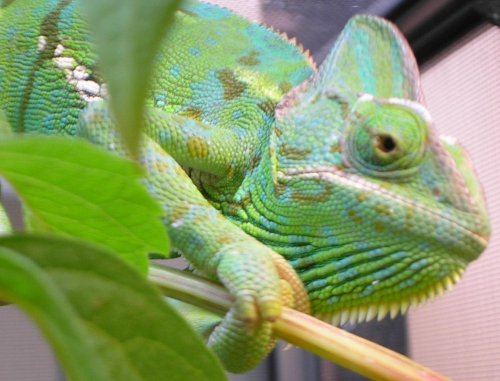http://picasaweb.google.com/bethabigail/Cammy
We have had Cammy for 7 or 8 months. We believe she is around 9 months old. Just in the last month, her colors started to dramatically change with more permanence.
A friend who had previously owned a veiled said that she would be sexually mature soon and ready to lay eggs.
I'd like to get some advice and information from more experienced breeders about whether she looks ready, if she's already with eggs, anything that I should know before introducing a male to her.
Thanks!
We have had Cammy for 7 or 8 months. We believe she is around 9 months old. Just in the last month, her colors started to dramatically change with more permanence.
A friend who had previously owned a veiled said that she would be sexually mature soon and ready to lay eggs.
I'd like to get some advice and information from more experienced breeders about whether she looks ready, if she's already with eggs, anything that I should know before introducing a male to her.
Thanks!



